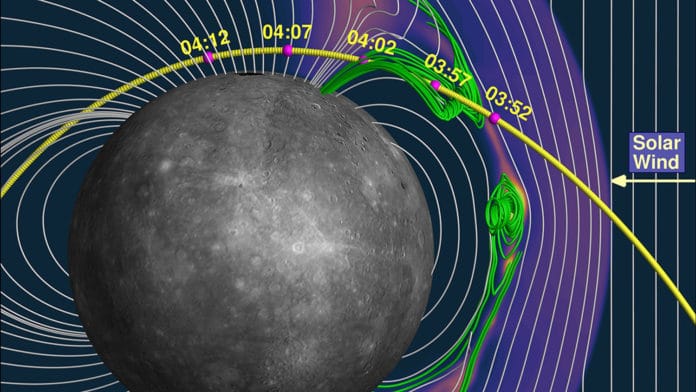Solar wind carries the Sun’s Magnetic field lines. This magnetic field bend after collision with Mercury- breaking bent lines and meeting with those of Mercury in an event called magnetic reconnection.
During reconnection, particles from the solar wind can enter Mercury’s magnetic field. These particle transmissions are called flux transfer events (FTEs), and a burst of FTEs in rapid succession is known as an FTE shower.
In a new study, scientists determined the effect of these showers on the Mercury’s surface. For this, they analyzed data collected by NASA’s MESSENGER spacecraft.
As the spacecraft passed through Mercury‘s magnetopause and toward the surface, the onboard ion mass spectrometer, FIPS (Fast Imaging Plasma Spectrometer), recorded the local abundances of sodium group ions, including sodium, magnesium, aluminum, and silicon ions.
An onboard magnetometer measured the local magnetic environment at the same time. This scenario occurred 3,748 times during MESSENGER’s orbital mission, with half of them involving the observation of an FTE shower.
Scientists analyzed the abundance of sodium group ions in Mercury’s atmosphere. They discover that during approaches that coincide with an FTE shower, the abundance of sodium group ions in the atmosphere is around 50% higher than during non-FTE shower periods.
Sputtering from the solar wind is the most likely cause for this, found scientists after studying many different pathways.
Journal Reference:
- Weijie Sun et al. MESSENGER Observations of Planetary Ion Enhancements at Mercury’s Northern Magnetospheric Cusp During Flux Transfer Event Showers. DOI: 10.1029/2022JA030280
